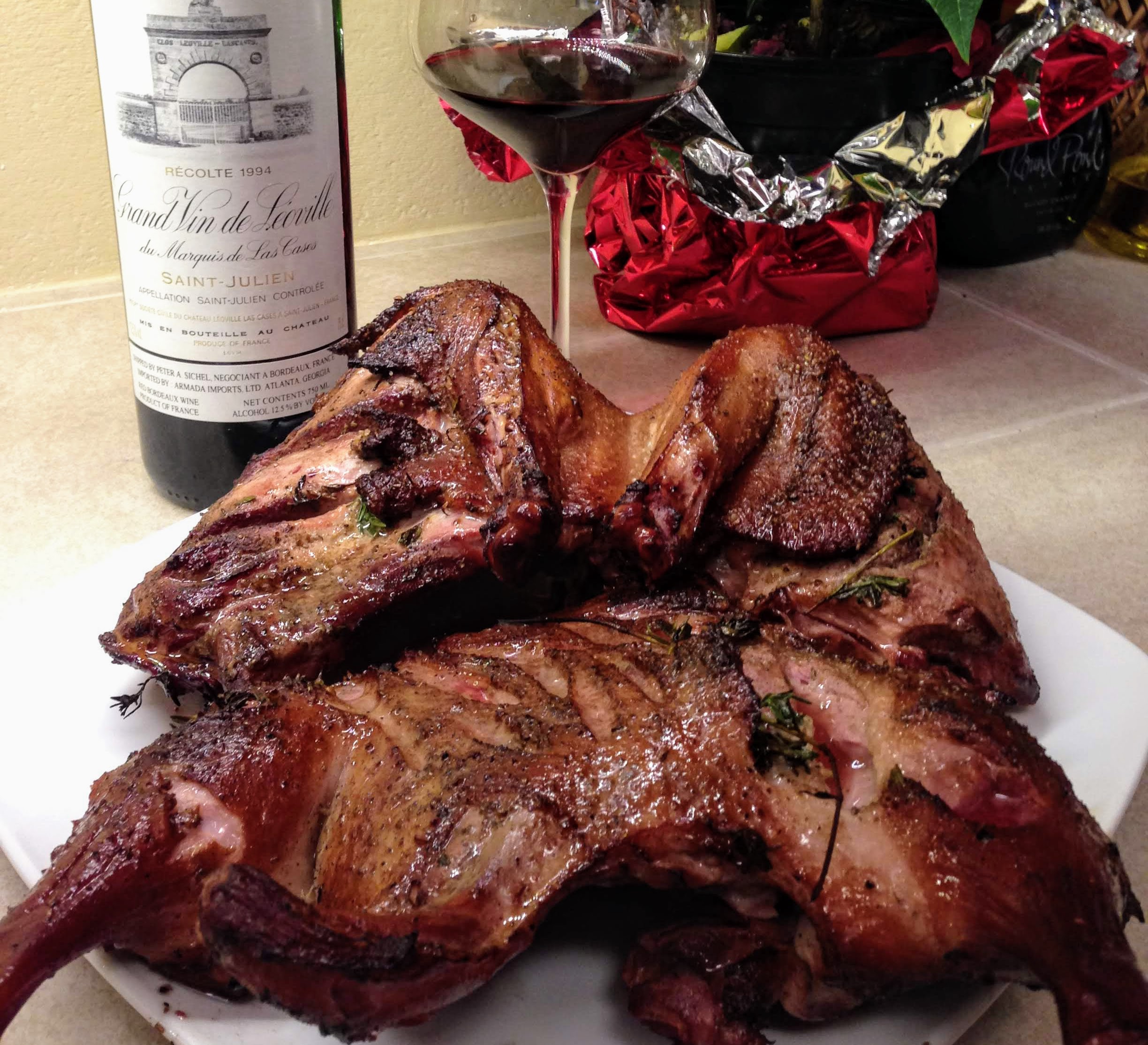Thanksgiving Traditions: Turkey Two Days
Rather like our American melting pot culture, our Thanksgiving turkey approach is a crazy quilt of inputs and experiments refined. And we’re not done! I’m also eager to gain more feedback and words of wisdom. But here are our must-dos:
First the dry brine…
This means lots of kosher salt crusted and rubbed all over the turkey, inside and out. Maybe 1/3 cup total for our small-family 14 lb bird. Nothing else. I used to wet brine in salt water until the year we experimented with 2 turkeys, a wet and a dry. It was no contest. So much more flavor and succulence in the dry-brined bird – the so-called “Judy Bird” after the late, beloved Chef Judy Rodgers, who shared the technique with LA Times Food Editor (at the time) Russ Parsons.
The salt infuses the flesh with seasoning, and the time under refrigeration ensures that the juices redistribute back into the flesh. We start brining on the Monday before Thanksgiving and flip it every 12 hours. For the last 12 hours or so, the bird comes out of the bag, so that the dryness of the fridge will encourage that moisture uptake, leaving the skin tacky rather than dewy, and thus ready to crisp.
Second, divide and conquer
Since we know the white and dark meat will cook at different rates and be done at different times, why fight it for a photo-op of a majestic, intact and inedible (at least the breast) turkey? We quarter our bird – first partition the breast from the leg and thigh portion, then halve each of those. That’s because John will be smoking half the bird in the green egg, giving us great smoky flavor and mahogany skin like the photo. I roast my half in the combi-steam oven with 65% steam, then zero steam for the last 10 minutes to crisp up the skin.
Monitor the temperatures in the thickest parts of breast and thigh with an instant-read thermometer, and note: the bird will cook MUCH faster this way – like an hour and a half or less for our size 14 lbs. As each quarter tests done, we remove it from the heat (egg or oven) to rest until the rest of the bird and the meal are done, which we time to about 30 mins.
Why two ways?
With my roasted bird, I am sure to get AMAZING drippings to make a gravy, for which I use cornstarch for speed and smoothness – don’t tell my grandmothers. With John’s smoked bird, we have that incredible smoky carcass from which to make smoked stock.
If you don’t have time or feel up to it, just freeze the bones in Ziptop bags until you have the energy and cooktop space. The house will smell great while it’s simmering, and then you can freeze and have the goods for serious risotto and polenta for the rest of truffle season.
Happy cooking!








